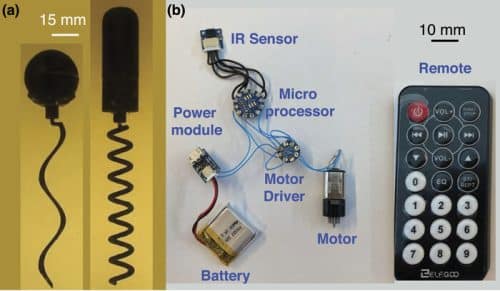A microscopic organism swimming in water is similar to a person attempting a backstroke in a tar pit. Scientists still do not have a clear understanding of how this happens.
Brown University students and faculty have constructed a self-propelled robotic swimmer that could aid academics in better understanding the intricate swimming behaviours of bacteria and other microbes. It is a robotic swimmer that swims like a flagellum, a corkscrew-like appendage used by numerous bacteria to move about. The apparatus makes it easier to analyse the fluid dynamics of flagellar motility by bringing the swimming action into the macroscopic world. Researchers can set up tests that would be unfeasible with genuine microbes because it is self-propelled, reconfigurable, and remotely controlled.

“Microorganisms use an incredibly complex form of locomotion,” said Roberto Zenit, professor at Brown’s School of Engineering and the senior author of the research. “We have mathematical models that make approximations of how it works, but to improve those approximations we need to make detailed measurements of the velocity fields around these organisms. By making a device that can mimic that swimming as closely as possible, we hope to make some of those measurements.”
The device is based on the E. coli bacterium’s shape. It has a cylindrical head that is 6 centimetres long and 2 centimetres in diameter and was created using a 3D printer. A small engine, a power supply, and other electronics are housed in the waterproof head. The engine propels a 9 centimeter long helical tail, which was also printed on a 3D printer. To experiment with different helix angles and geometries, tails can be changed in and out. The motor speed and rotation direction are controlled using a remote control.
The researchers ran a series of tests with the gadget swimming in a mixture of corn syrup and water, which simulates the viscosity of a microscale swimmer ploughing through water. The results revealed that the device’s swimming performance matches the expectations of a basic resistive force model.
“What this gives us is the ability to do macroscopic experiments that we have full control over”, says Daniel Harris, assistant professor of engineering at Brown. “Imagine trying to tell a bacterium to swim in a particular direction or change its helix angle. That’s pretty hard to do. But it’s something we can do with this.” The team intends to take thorough measurements of the flow fields in the future. They expect to answer several critical questions that have remained unanswered.
You can find details here.






